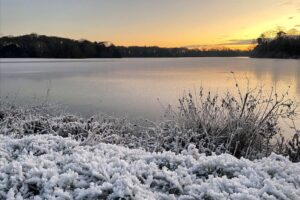The Natural Environment in Winter
A new year begins and while it is still winter, the amazing cold snap in December seems to have fooled the birds (and some of the plants!) in my garden into thinking Spring is upon us. We still have quite a way to go though, and I thought I would list some up and coming things to look out for in the next few months.
At the end of this month is the Great Garden Birdwatch, a fantastic National count of birds that helps contribute to science and understanding of typical garden bird species. More information can be found on the RSPB website should you want to be involved. Do make sure your bird feeders are cleaned regularly as bird flu is very much still around. It Is better to not feed continuously if you struggle to find time to keep feeders clean.

I always look for the first brave little snowdrop as evidence that the bulk of winter may have passed and I love to see the huge carpets of this flower which develop along hedge bottoms, in woodland and in gardens. The first flowering date will vary around the country and with the cultivar planted, but the average first flowering date is the 26th of January. Will you spot one before then?! A number of places in Lincolnshire hold snowdrop tours to view this spectacle in early February and many of these places also serve tea and cake which is clearly an added bonus!
2023 marks ten years of the earthworm recording scheme. If you want to learn more about incredibly important earthworms (there are over 30 different species!) and perhaps get involved in the scheme, there is a free webinar running on the 2nd of February.
If you prefer your invertebrates just a bit more glamorous than the humble (yet important) earthworm, the sunny days of February see the first of the big fat bumblebee queens emerge from their winter hibernation in search of the first spring flowers such as Lesser Celandine or Coltsfoot. You may even see the occasional small tortoiseshell or peacock butterfly out and about, chancing it’s luck with the weather.
If you are interested in watching the seasons unfold through the first glimpse of a specific flower or bird, do take a look at the Nature’s Calendar on the Woodland Trust’s website. You can record your sightings and help contribute to the national records that map the seasonal (and climate driven) changes as they happen across the country.
Gillian Fisher, Ecologist
Photographs – Gillian Fisher & Christian Poulsen
